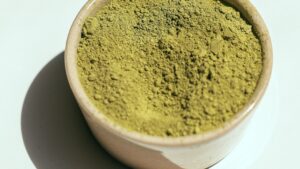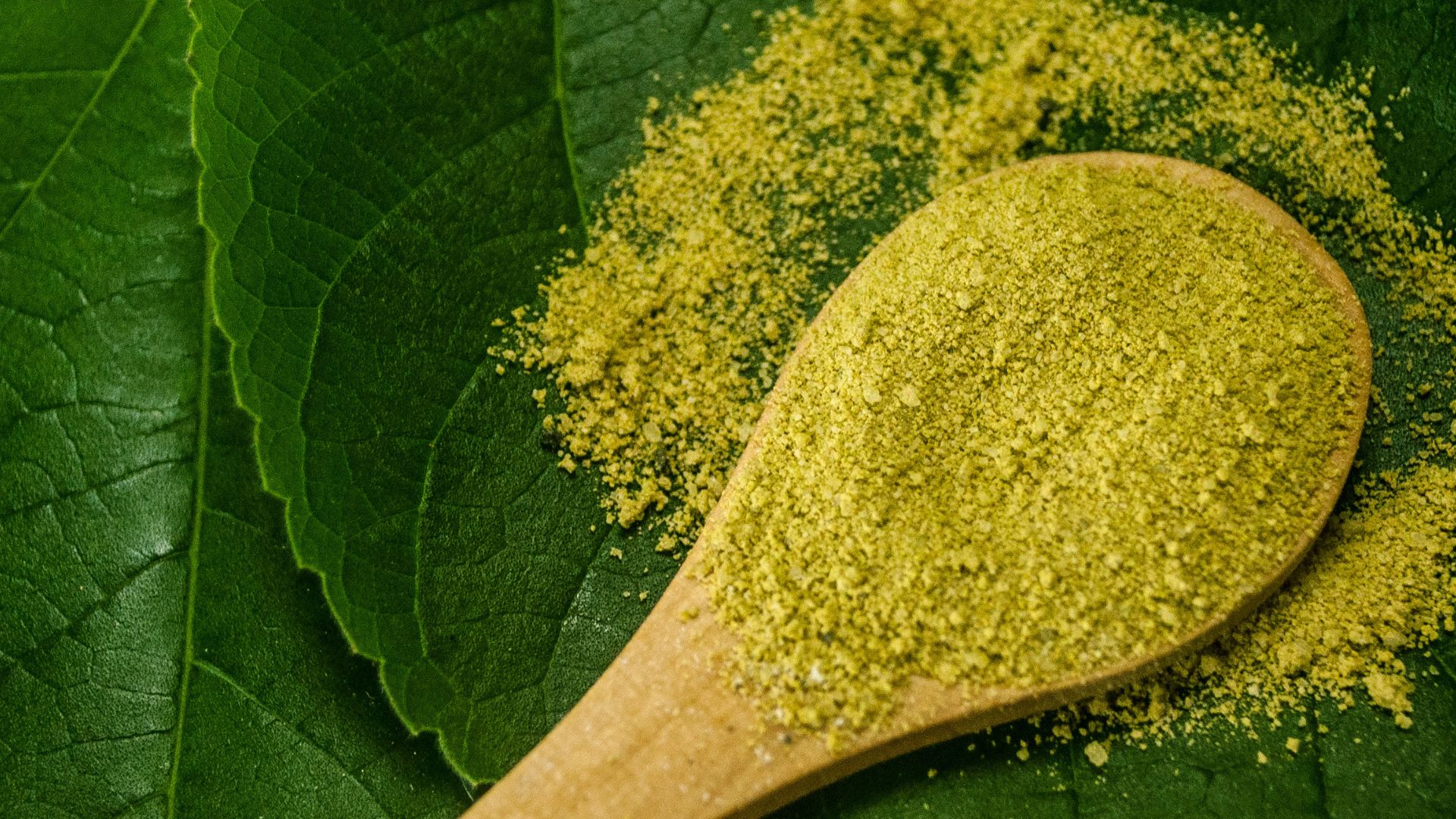Table of Contents
ToggleWhat is Kelp Powder (KB)?
Kelp powder is a natural product made from dried and finely ground kelp, a type of seaweed. Kelp grows in underwater forests in shallow ocean waters and is known for its rich nutrient profile. It’s packed with vitamins, minerals, and antioxidants, including iodine, calcium, magnesium, and vitamins A and C. The powder retains these nutrients, making it a healthful addition to various dishes. == >> Check out the right cookies Kelp Powder, tools and ingredients that you need here

The Role of Kelp Powder in Cookie Making
Enhancing Nutritional Value
One of the standout benefits of using kelp powder in cookie recipes is the boost in nutritional value. It’s a fantastic source of iodine, which supports thyroid function and overall metabolism. By incorporating kelp powder, you can add a subtle nutrient boost to your cookies without compromising their flavor. == >> Check out the right cookies Kelp Powder, tools and ingredients that you need here
Adding a Unique Flavor
Kelp powder has a mild, oceanic flavor that can impart a unique taste to baked goods. While this flavor might be more noticeable in savory recipes, it can add an intriguing depth to cookies when used in small amounts. Think of it as a way to introduce a hint of the sea, which can complement ingredients like chocolate or nuts. == >> Check out the right cookies Kelp Powder, tools and ingredients that you need here
Improving Texture
Incorporating kelp powder into cookie dough can also impact the texture. It acts as a natural thickener and can help achieve a denser, chewier cookie. The powder’s ability to absorb moisture makes it a valuable addition for creating cookies with a satisfying, chewy bite. == >> Check out the right cookies Kelp Powder, tools and ingredients that you need here

How to Use Kelp Powder in Cookies
Starting Small
When using kelp powder for the first time, it’s best to start with a small amount—typically about one to two teaspoons per batch of cookie dough. This ensures that the flavor is subtle and doesn’t overpower other ingredients.
Combining with Other Flavors
To balance the oceanic notes of kelp powder, consider pairing it with strong flavors like chocolate chips, nuts, or spices. These ingredients can help mask the seaweed taste and create a more harmonious flavor profile. == >> Check out the right cookies Kelp Powder, tools and ingredients that you need here
Tips for Baking with Kelp Powder
- Test First: Before incorporating kelp powder into large batches, try a small test batch to get a sense of how it affects the flavor and texture of your cookies.
- Combine with Other Nutrients: For a more balanced nutritional profile, combine kelp powder with other superfoods or nutrient-dense ingredients.
- Adjust Liquids: Since kelp powder can absorb moisture, you may need to adjust the liquid content in your cookie recipe to achieve the desired dough consistency.
Kelp powder is a versatile ingredient that can enhance the nutritional value, flavor, and texture of your cookies. While it might seem unconventional at first, experimenting with this seaweed-based powder can lead to delightful and unique baking experiences. Whether you’re looking to add a touch of the ocean or boost your cookie’s health benefits, kelp powder is worth considering. == >> Check out the right cookies Kelp Powder, tools and ingredients that you need here
Examples of Using Kelp Powder in Cookie Recipes
1. Chocolate Chip Cookies with a Sea Twist
Ingredients:
- 1 cup all-purpose flour
- 1/2 teaspoon kelp powder
- 1/2 teaspoon baking soda
- 1/4 teaspoon salt
- 1/2 cup unsalted butter
- 1/4 cup granulated sugar
- 1/2 cup brown sugar, packed
- 1 large egg
- 1 teaspoon vanilla extract
- 1 cup chocolate chips
Instructions:
- Preheat your oven to 350°F (175°C) and line a baking sheet with parchment paper.
- In a small bowl, whisk together the flour, kelp powder, baking soda, and salt.
- In a large bowl, cream the butter and sugars until light and fluffy. Beat in the egg and vanilla extract.
- Gradually add the dry ingredients to the wet mixture, mixing until just combined. Stir in the chocolate chips.
- Drop tablespoon-sized scoops of dough onto the prepared baking sheet, spacing them about 2 inches apart.
- Bake for 10-12 minutes, or until the edges are golden brown. Let cool on the baking sheet for a few minutes before transferring to a wire rack to cool completely.
Flavor Profile: The chocolate chips will dominate, but the kelp powder adds a subtle, interesting complexity that complements the rich, sweet flavors. == >> Check out the right cookies Kelp Powder, tools and ingredients that you need here
2. Nutrient-Rich Oatmeal Cookies
Ingredients:
- 1 cup rolled oats
- 1/2 cup all-purpose flour
- 1 teaspoon kelp powder
- 1/2 teaspoon baking powder
- 1/4 teaspoon salt
- 1/2 cup coconut oil, melted
- 1/2 cup honey or maple syrup
- 1 large egg
- 1/2 cup raisins or dried fruit
- 1/2 teaspoon cinnamon (optional)
Instructions:
- Preheat your oven to 350°F (175°C) and line a baking sheet with parchment paper.
- In a medium bowl, mix together the oats, flour, kelp powder, baking powder, salt, and cinnamon.
- In another bowl, whisk the melted coconut oil, honey or maple syrup, and egg until well combined.
- Stir the wet ingredients into the dry ingredients until everything is evenly mixed. Fold in the raisins or dried fruit.
- Scoop tablespoon-sized portions of dough onto the prepared baking sheet, flattening them slightly.
- Bake for 12-15 minutes, or until the edges are golden brown. Allow to cool on the baking sheet for a few minutes before transferring to a wire rack.
Flavor Profile: The oatmeal provides a chewy texture, and the kelp powder blends seamlessly, adding a hint of complexity without overpowering the natural sweetness of the honey or maple syrup. == >> Check out the right cookies Kelp Powder, tools and ingredients that you need here
3. Coconut-Kelp Shortbread Cookies
Ingredients:
- 1 cup all-purpose flour
- 1/4 cup kelp powder
- 1/2 cup unsalted butter, softened
- 1/4 cup granulated sugar
- 1/4 cup shredded coconut
Instructions:
- Preheat your oven to 325°F (160°C) and line a baking sheet with parchment paper.
- In a medium bowl, mix together the flour and kelp powder.
- In another bowl, cream the butter and sugar until smooth. Gradually add the flour mixture and stir until a dough forms. Fold in the shredded coconut.
- Roll the dough out on a lightly floured surface to about 1/4-inch thickness. Cut into desired shapes and place on the baking sheet.
- Bake for 10-12 minutes, or until the edges are lightly golden. Cool on the baking sheet for a few minutes before transferring to a wire rack.
Flavor Profile: The shortbread’s buttery richness is enhanced by the subtle, oceanic flavor of kelp powder, while the shredded coconut adds a tropical touch.
Drilling Deeper: Kelp Powder vs. Other Common Cookie Ingredients
When exploring the use of kelp powder in cookies, it’s valuable to compare it to other common ingredients to understand its unique attributes and benefits. Here’s a closer look at how kelp powder stacks up against some popular alternatives:
Kelp Powder vs. Matcha Powder
Matcha Powder:
- Flavor Profile: Matcha is a finely ground powder made from green tea leaves. It has a distinct, grassy, and slightly bitter flavor that adds a vibrant green color to baked goods.
- Nutritional Benefits: Matcha is rich in antioxidants, particularly catechins, and provides a significant boost of caffeine and L-theanine, which can improve focus and alertness.
- Usage in Cookies: Matcha powder imparts a strong, noticeable flavor and vibrant color to cookies. It works well in recipes where the green tea flavor can shine, such as in matcha white chocolate cookies. == >> Check out the right cookies Kelp Powder, tools and ingredients that you need here
Kelp Powder:
- Flavor Profile: Kelp powder has a mild, oceanic taste that is generally less intense than matcha. It blends well without dominating other flavors, adding a subtle depth.
- Nutritional Benefits: Kelp powder is an excellent source of iodine and other trace minerals that support thyroid function and overall health.
- Usage in Cookies: Kelp powder is best used in small quantities to enhance nutritional value and add a hint of complexity. It’s particularly useful when combined with stronger flavors.
Comparison: Matcha powder offers a stronger flavor and visual impact, making it ideal for recipes where its characteristics are desired. Kelp powder, on the other hand, provides a more subtle flavor and a unique nutritional boost, fitting seamlessly into a broader range of cookie recipes. == >> Check out the right cookies Kelp Powder, tools and ingredients that you need here
Kelp Powder vs. Chia Seeds
Chia Seeds:
- Flavor Profile: Chia seeds have a neutral taste, making them a versatile ingredient. They can add a slight nuttiness if toasted but generally don’t affect the flavor of cookies significantly.
- Nutritional Benefits: Chia seeds are rich in omega-3 fatty acids, fiber, and protein. They also contain various vitamins and minerals, including calcium and magnesium.
- Usage in Cookies: Chia seeds are often used for their texture rather than their flavor. They can absorb moisture and expand, adding a pleasant chewiness and a nutritional boost to cookies.
Kelp Powder:
- Flavor Profile: Kelp powder adds a mild oceanic flavor, which can enhance the overall complexity of cookies. It doesn’t alter the texture but offers a unique nutritional benefit.
- Nutritional Benefits: While kelp powder doesn’t provide the same omega-3 fatty acids as chia seeds, it is a significant source of iodine and other trace minerals.
- Usage in Cookies: Kelp powder is more about nutritional enhancement and flavor complexity. It doesn’t contribute to the texture like chia seeds but offers distinct health benefits.
Comparison: Chia seeds are ideal for adding texture and extra nutrients like omega-3 fatty acids, whereas kelp powder focuses more on providing trace minerals and subtle flavor enhancement. == >> Check out the right cookies Kelp Powder, tools and ingredients that you need here
Kelp Powder vs. Flaxseed Meal
Flaxseed Meal:
- Flavor Profile: Flaxseed meal has a mild, nutty flavor that can complement a variety of baked goods. It’s not as dominant as kelp powder but adds a pleasant taste.
- Nutritional Benefits: Flaxseed meal is a great source of fiber, omega-3 fatty acids, and lignans, which have antioxidant properties. It also provides protein and various vitamins and minerals.
- Usage in Cookies: Flaxseed meal can add a slight nuttiness and enhance the texture, providing a bit of chewiness and moisture absorption.
Kelp Powder:
- Flavor Profile: Kelp powder has a subtle, oceanic flavor that may not be as universally complementary as flaxseed’s nuttiness but adds unique depth.
- Nutritional Benefits: While kelp powder doesn’t offer the same omega-3 content as flaxseed meal, it provides a significant amount of iodine and other essential minerals.
- Usage in Cookies: Kelp powder is used for nutritional enhancement and subtle flavor rather than texture. It doesn’t have the same impact on dough consistency as flaxseed meal.
Comparison: Flaxseed meal provides a nutty flavor and texture enhancement, making it ideal for adding a wholesome touch to cookies. Kelp powder, meanwhile, offers a unique nutrient profile and flavor complexity that can set your cookies apart. == >> Check out the right cookies Kelp Powder, tools and ingredients that you need here
Ingredient Comparison Table: Kelp Powder vs. Other Common Ingredients
| Ingredient | Flavor Profile | Nutritional Benefits | Usage in Cookies | Key Notes | Considerations |
|---|---|---|---|---|---|
| Kelp Powder | Mild, oceanic | Rich in iodine, calcium, magnesium, and trace minerals | Enhances nutritional value and adds subtle flavor | Adds a unique depth without overpowering other flavors | Start with small amounts to balance flavor and nutritional boost |
| Matcha Powder | Grassy, slightly bitter | High in antioxidants, caffeine, and L-theanine | Adds vibrant color and strong flavor | Provides a distinct taste and vibrant green color | Might overshadow other flavors if used in excess |
| Chia Seeds | Neutral, slightly nutty | Rich in omega-3 fatty acids, fiber, and protein | Adds texture and chewiness | Absorbs moisture, creating a chewy texture | May affect the dough’s consistency; consider texture impact |
| Flaxseed Meal | Mild, nutty | High in fiber, omega-3 fatty acids, and lignans | Adds a nutty flavor and helps with moisture absorption | Enhances texture and nutritional content | Can be used as an egg substitute; affects dough consistency |
| Coconut Flour | Slightly sweet, coconutty | High in fiber, low in carbs | Absorbs moisture and adds a mild coconut flavor | Can alter texture significantly; good for gluten-free options | Adjust liquid content as it absorbs more moisture |
Key Notes and Considerations
Kelp Powder:
- Key Notes:
- Provides unique flavor complexity with subtle oceanic notes.
- Offers a significant boost in iodine and other trace minerals.
- Best used in small quantities to avoid overpowering the cookie flavor.
- Considerations:
- Ensure proper balance to avoid a strong seaweed taste.
- Pair with robust flavors to mask the oceanic undertones if needed.
Matcha Powder:
- Key Notes:
- Adds vibrant green color and distinct green tea flavor.
- Rich in antioxidants and provides a caffeine boost.
- Ideal for recipes where its flavor and color can stand out.
- Considerations:
- The strong flavor might not be suitable for all cookie recipes.
- Adjust quantities to ensure balance between flavor and color.
Chia Seeds:
- Key Notes:
- Adds chewiness and nutritional benefits with omega-3s and fiber.
- Can absorb moisture, affecting the dough consistency.
- Versatile and blends well without overpowering the flavor.
- Considerations:
- May require adjustments to liquid content in the recipe.
- Texture impact might be significant depending on the amount used.
Flaxseed Meal:
- Key Notes:
- Provides a nutty flavor and enhances texture.
- Rich in omega-3s and fiber, contributing to nutritional content.
- Can act as a binding agent or egg substitute in recipes.
- Considerations:
- Can affect dough consistency and texture.
- Adjustments may be needed for liquid content and overall recipe balance.
Coconut Flour:
- Key Notes:
- Adds a slight coconut flavor and is high in fiber.
- Suitable for gluten-free baking, absorbing more moisture than regular flour.
- Provides a unique texture and mild sweetness.
- Considerations:
- Requires adjustments to liquid content due to high moisture absorption.
- Can significantly alter the cookie’s texture; use in combination with other flours if needed.
FAQs on Kelp Powder in Cookie Making
1. What exactly is kelp powder?
Kelp powder is made from dried, finely ground kelp, a type of seaweed that grows in shallow ocean waters. It retains the nutritional benefits of kelp, including iodine, calcium, and magnesium.
2. How does kelp powder affect the flavor of cookies?
Kelp powder has a mild, oceanic flavor. When used in small amounts, it adds a subtle complexity to cookies without overwhelming other flavors. It can impart a hint of the sea, which can complement or contrast with other ingredients.
3. Can kelp powder be used in all types of cookies?
While kelp powder can be used in many types of cookies, it’s best suited for recipes where its unique flavor won’t clash with other ingredients. It works well in cookies with strong flavors like chocolate or nuts. Start with small amounts to gauge its impact.
4. How much kelp powder should I use in my cookie recipe?
Start with 1 to 2 teaspoons per batch of cookie dough. This amount provides a subtle flavor enhancement and nutritional boost without overpowering the overall taste of the cookies.
5. Are there any health benefits to using kelp powder?
Yes, kelp powder is rich in iodine, which supports thyroid function and metabolism. It also contains other essential minerals like calcium and magnesium, contributing to overall health.
6. How does kelp powder compare to other nutritional additives like chia seeds or flaxseed meal?
Kelp powder provides a unique iodine boost and subtle flavor complexity, whereas chia seeds and flaxseed meal offer texture changes and different nutrients like omega-3 fatty acids and fiber. Each has distinct benefits, so your choice will depend on what you’re looking to enhance in your cookies.
7. Can I substitute kelp powder with other seaweed products?
Yes, other seaweed products like dulse powder or nori flakes can be used, though they may impart different flavors or textures. If substituting, adjust the quantity based on the specific seaweed’s flavor profile and intensity.
8. How should I store kelp powder?
Store kelp powder in an airtight container in a cool, dry place, away from direct sunlight. Proper storage helps maintain its freshness and potency. == >> Check out the right cookies Kelp Powder, tools and ingredients that you need here
Final Words
Incorporating kelp powder into your cookie recipes can be a delightful way to explore new flavors and boost nutritional content. Its subtle oceanic flavor and rich mineral profile offer unique benefits and can elevate your baking in creative ways. Whether you’re enhancing your cookies with its distinct taste or leveraging its health benefits, kelp powder is a versatile ingredient worth experimenting with.
As with any ingredient, start with small quantities and adjust based on your taste preferences and recipe requirements. By understanding the role of kelp powder and comparing it to other common ingredients, you can make informed decisions and create delicious, healthful treats.
Happy baking, and enjoy discovering the possibilities with kelp powder.

